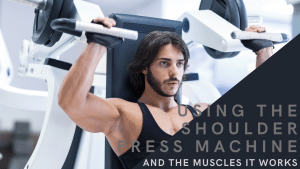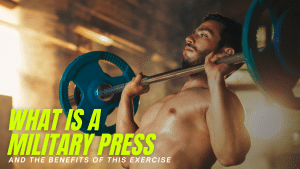How to perform upright rows safely to avoid injuries
The shoulders are probably one of the most mobile parts of the human body. Thanks to the flexibility of the shoulder joints and muscles, you are offered a greater range of motion which allows you to perform any activity that involves lifting and throwing, whether these are exercises or simple day-to-day tasks.
However, this flexibility comes with one big caveat. While the shoulder joints are the most flexible, they are also the most injured.
Yikes, who would have thought that the shoulders can be so delicate?
This is why it is important to strengthen them. But even then, some shoulder exercises may do more harm than good if performed incorrectly, and one of those is the upright row.
What is an upright row?
The upright row is a pull exercise that targets the muscles of the shoulders and upper back. The primary movers are the upper trapezius, posterior and anterior deltoids, rhomboids, and to a lesser degree, the biceps.
But while the upright row is generally an effective exercise to build shoulder strength, it has also gotten a bad reputation for the pain, discomfort, and even injury, that it causes.
This is because when you do the upright row, your hands are locked in a position that compromises your upper arm, causing it to rotate internally in the shoulders that may result in a pinched tendon.
While this doesn’t exactly sound reassuring, it doesn’t mean upright rows are a bad exercise that must be avoided at all costs. You can still do it, but you have to do it right.
How to do the upright row
Before we proceed with the safer way to do the exercise, here is the most common way people do the upright row:
- Begin by standing with your legs shoulder-width apart.
- Hold a barbell with your palms facing you and let it hang in front of your hips with extended arms.
- Make sure that your hands are positioned no more than shoulder-width apart on the bar. Such position is much safer for both your wrists and shoulders.
- Take a deep breath then brace your core, keep your spine neutral, bring your chest out, and remember to always look straight ahead. Maintain this in every rep.
- Lift the barbell towards your chin. As you do this, be sure to lead with your elbows and keep the bar close to the body.
- Once you reach the top of the movement, your arms should be parallel with your shoulders.
- Pause briefly before lowering the barbell back to the starting position.
- Repeat according to your desired number of reps.
While the barbell is normally the weight of choice in an upright row, you may also use other weights such as dumbbells, kettlebells, and weight plates.
Using whichever of these three is one way to start making upright rows safer because they give your hands more freedom of movement than a fixed bar. This means that internal rotation of the shoulders is less likely to happen, significantly reducing the risk of injury.
What makes the upright row unsafe?
Any exercise, regardless of whichever specific body part it works, aims to improve, build, and strengthen. However, there is a reason why the upright row has been considered a not-so-ideal exercise for the shoulders.
Now that you are past the step-by-step guide on how to perform an upright row, you should know by now that the exercise requires you to stand with a barbell held at your hips, while your hands are shoulder-width apart on the bar. From that position, you are supposed to lift the bar until it reaches your neck by letting your elbows take the lead.
It turns out that such movement puts your shoulders in an uncompromising position, especially if your elbows go way above your shoulders, which is a common mistake in upright rows. Once this happens, the bar causes your shoulder joints to rotate internally, and if you go heavy on the weights, this becomes even more of a problem.
This is because the head of the humerus closes the space between other bones in the area, making the bones in your shoulder more prone to rubbing against rotator cuff tendons and soft tissue.
How can you upright row safely?
Do not lose hope just yet because there are two ways by which you can make upright rows safe.
Forget the bar
The barbell puts too much restriction on the exercise and greatly limits the movement of your shoulders, so you are better off with dumbbells instead because they give your shoulders more freedom.
A pair of dumbbells is the ultimate key to making the upright row work. Holding them naturally—that is with a firm overhand grip—distributes the load on either side of your hand which will prevent internal rotation of the shoulders.
Pull up to the shoulders only
Instead of pulling upwards until your elbows are higher than your shoulders, stop until your arms are at shoulder level instead, and don’t go any higher than that. This will not only prevent internal rotation of the shoulder but will also keep the tension on your medial deltoid. This muscle is located between the anterior and posterior deltoids, and the one responsible for the shoulders’ rounded appearance.
Once your elbows go higher than your shoulders, you are just taking the tension off of them and shifting it into your traps, which are not exactly the muscles you are trying to build in an upright row.
Benefits of the upright row
Sure, the upright row can potentially damage your shoulders if performed without caution, but some good can still come out of this exercise.
More defined shoulders
The upright row increases the size and strength of the anterior and lateral heads of the deltoid muscles, giving your shoulders a bulkier appearance. This is essential for people who want to improve their movements during bench presses and other similar exercises that require pressing.
However, make sure that you employ proper form at all times during an upright row to make sure you are moving the weight by recruiting your shoulder muscles at the top of the movement instead of relying on the biceps and forearms to lift.
More pronounced traps
Not only are bigger traps impressive, but they also allow you to perform compound exercises such as deadlifts, back squats, and presses better.
To hit your traps more during an upright row, hold the bar with a narrow grip instead. This is because the farther your hands are on the bar, the less elevation you get with the barbell. Positioning your hands wide puts more emphasis on the posterior and anterior deltoids rather than the traps.
However, a narrow grip is not always advisable since it may put unwanted pressure on your wrists, so if you really want to train your traps, perhaps it is best to try other exercises instead.
Upright row mistakes to avoid
The upright row can be risky enough as it is, so don’t make it any more dangerous by avoiding these mistakes.
Elbow too high
Refrain from lifting your arms above your shoulders. Once you reach the top of the movement, make sure that your arms are at shoulder level only to avoid shoulder impingement. Going higher than that already places your shoulders at risk.
Grip too narrow
The upright row can strain the wrists, so it is more advisable to hold on to the bar with your hands shoulder-width apart. Also, avoid letting your wrists move down or to the sides during the lift and allow them to flex as needed instead.
Unstable core
Refrain from turning or twisting your torso during the exercise; remember that your core must steady and engaged at all times to avoid using momentum. You must also keep your chest out, your spine neutral, and your eyes looking straight ahead throughout the movement.
Using weight that is too heavy
You are not meant to go heavy on the weights in an upright row, so don’t try and progress by increasing the load.
Shoulder impingement usually happens when exercises that heavily involve the shoulders are performed with improper form and too much weight, so always keep in mind that the shoulder joint is a complex mechanism and that injuries to it can take quite some time to heal.


